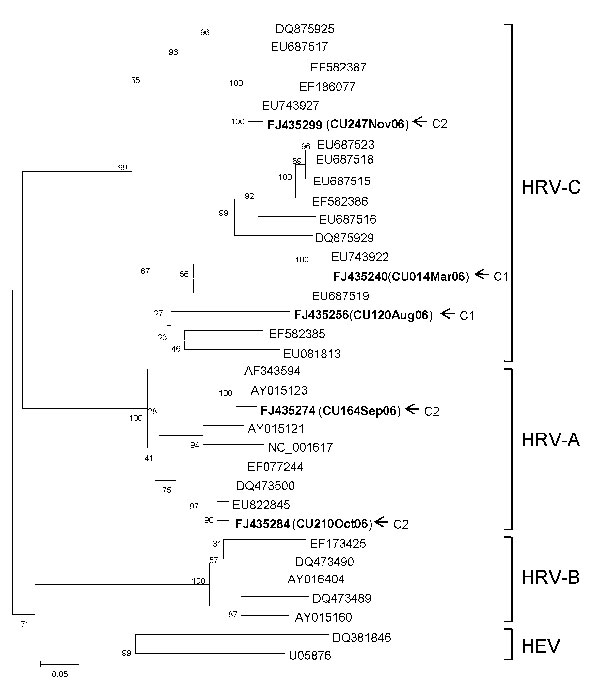Volume 15, Number 6—June 2009
Letter
Recurrent Human Rhinovirus Infections in Infants with Refractory Wheezing
Figure

Figure. Phylogenetic analysis of nucleotide sequences of the virus capsid protein (VP4) region of 5 human rhinovirus (HRV) strains (shown in boldface) isolated from 289 nasopharyngeal aspirate specimens, including those of 2 infants with refractory wheezing (C1 and C2), on the basis of amplification of VP4/2 by seminested reverse transcription–PCR. The tree was constructed by using the neighbor-joining method and Kimura’s 2-parameter distance with bootstrap replicated from 1,000 trees by using MEGA 4.0 (www.megasoftware.net). Scale bar indicates number of nucleotide substitutions per site. Human enterovirus (HEV) was used as an outgroup for comparison.
Page created: December 08, 2010
Page updated: December 08, 2010
Page reviewed: December 08, 2010
The conclusions, findings, and opinions expressed by authors contributing to this journal do not necessarily reflect the official position of the U.S. Department of Health and Human Services, the Public Health Service, the Centers for Disease Control and Prevention, or the authors' affiliated institutions. Use of trade names is for identification only and does not imply endorsement by any of the groups named above.